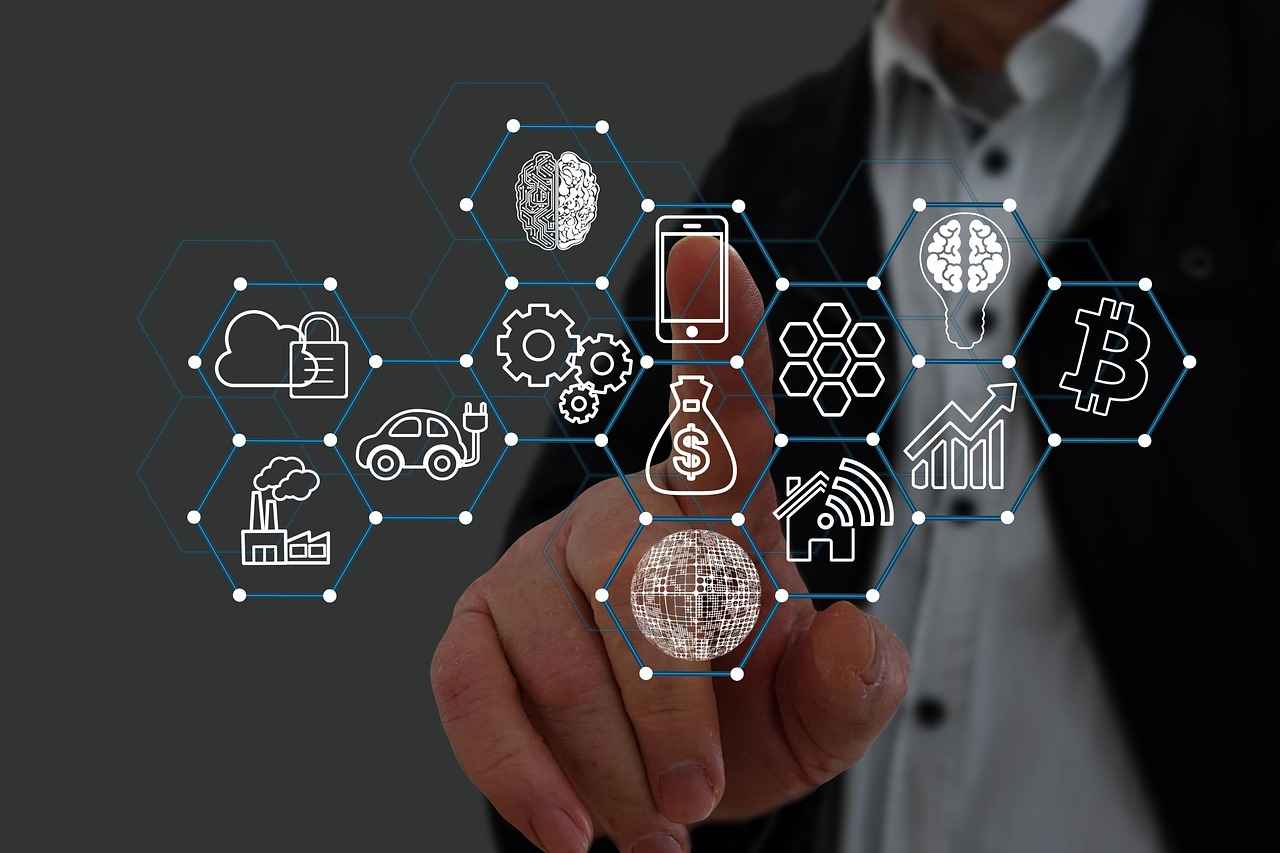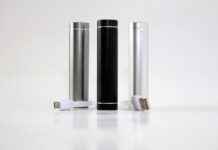This article delves into a wide array of smart home devices specifically designed to enhance energy savings and efficiency. By examining their features, benefits, and contributions to sustainable living, we aim to provide a comprehensive understanding of how these innovative gadgets can transform our homes.
1. Understanding Smart Home Devices
Smart home devices are internet-connected gadgets that automate and optimize household tasks, making them more convenient and energy-efficient. They encompass a variety of products, including smart thermostats, lighting systems, and appliances that can be controlled remotely.
2. Advantages of Smart Home Devices for Energy Efficiency
Implementing smart home devices can lead to significant energy savings. These devices offer real-time data and automation, which help in minimizing unnecessary energy consumption and reducing utility bills.
- 2.1. Reduced Energy Consumption
Smart devices intelligently adjust energy use based on real-time needs, ensuring that energy is not wasted. For instance, smart thermostats learn your schedule to optimize heating and cooling.
- 2.2. Environmental Impact
By reducing energy consumption, smart home devices help lower carbon footprints, supporting sustainability and environmental conservation.
3. Popular Smart Home Devices for Energy Savings
Several smart devices are particularly noted for their energy-saving capabilities:
- 3.1. Smart Thermostats – These devices automatically adjust temperatures based on user habits, leading to substantial energy savings.
- 3.2. Smart Lighting Systems – Allowing users to control lights remotely, these systems can be programmed to turn off when not needed, reducing waste.
- 3.3. Smart Plugs – Enable users to schedule on/off times for appliances, preventing energy waste from devices left on unnecessarily.
- 3.4. Energy Monitoring Systems – Track real-time energy usage, providing insights that help homeowners make informed decisions about their energy consumption.
4. Choosing the Right Smart Home Devices
Selecting the appropriate smart home devices involves evaluating compatibility with existing systems, desired features, and individual user needs. It’s crucial to assess how each device can contribute to energy savings.
5. Installation and Setup
Proper installation is vital for maximizing the benefits of smart home devices. Most devices come with user-friendly instructions, making setup straightforward for most homeowners.
6. Future Trends in Smart Home Energy Efficiency
The future of smart home technology looks promising, with advancements in AI and machine learning enhancing energy management systems, leading to even smarter energy-saving solutions.
7. Conclusion: Embracing Smart Home Technology for Energy Efficiency
Smart home devices present a remarkable opportunity for homeowners to improve energy efficiency and reduce costs. By understanding their features and benefits, users can make informed choices that contribute to a sustainable future.

1. What Are Smart Home Devices?
Smart Home Devices for Energy Savings and Efficiency
In today’s fast-paced world, smart home devices have emerged as essential tools that not only enhance convenience but also promote energy efficiency. These internet-connected gadgets automate various household tasks, allowing users to manage their homes with ease and precision.
Smart home devices are internet-connected gadgets designed to automate and optimize household tasks. These devices range from smart thermostats and lighting systems to intelligent appliances, all of which can be controlled remotely through smartphones or voice commands. The primary goal of these devices is to enhance convenience and improve energy efficiency, making daily routines more manageable while contributing to sustainable living.
2. Benefits of Smart Home Devices for Energy Efficiency
Implementing smart home devices can lead to significant energy savings. The ability to monitor and control energy usage in real-time helps reduce unnecessary consumption and lowers utility bills.
- Reduced Energy Consumption: Smart devices adjust energy use based on real-time needs, ensuring that energy is not wasted. For instance, smart thermostats learn your schedule to optimize heating and cooling.
- Environmental Impact: By minimizing energy consumption, smart home devices contribute to a lower carbon footprint, supporting sustainability and environmental conservation.
3. Popular Smart Home Devices for Energy Savings
Several smart devices stand out for their energy-saving capabilities:
- Smart Thermostats: Automatically adjust temperatures based on user habits, leading to substantial energy savings.
- Smart Lighting Systems: Allow remote control and scheduling of lights, reducing energy waste.
- Smart Plugs: Enable users to control appliances remotely, helping to cut down on energy waste.
- Energy Monitoring Systems: Track real-time energy usage and provide insights into consumption patterns.
4. How to Choose the Right Smart Home Devices
When selecting smart home devices, consider compatibility with existing systems and user-friendly features. This ensures that the devices enhance functionality and improve the overall user experience.
5. Installation and Setup of Smart Home Devices
Proper installation is crucial for maximizing the benefits of smart home devices. Many can be installed by homeowners, but complex systems may require professional assistance.
6. Future Trends in Smart Home Energy Efficiency
The future of smart home technology is promising, with advancements in AI and machine learning set to enhance energy management systems.
7. Conclusion: Maximizing Energy Savings with Smart Home Devices
Smart home devices offer a remarkable opportunity for homeowners to enhance energy efficiency and reduce costs. By understanding their features and benefits, users can make informed choices that contribute to a sustainable future.

2. Benefits of Smart Home Devices for Energy Efficiency
Benefits of Smart Home Devices for Energy Efficiency
In today’s world, where energy conservation is becoming increasingly important, smart home devices have emerged as a game-changer. These innovative technologies not only enhance convenience but also play a crucial role in promoting energy efficiency. Here, we explore the significant benefits of integrating smart home devices into your living space.
- Real-Time Monitoring: Smart home devices provide real-time data on energy consumption, allowing homeowners to track their usage patterns. This transparency empowers users to make informed decisions about their energy habits.
- Automation: Automation features enable devices to operate based on your daily routine. For instance, smart thermostats can adjust heating and cooling systems automatically, ensuring that energy is not wasted when the house is empty.
- Remote Control: With smart home technology, you can control devices remotely through mobile applications. This means you can turn off lights or appliances that may have been left on, even when you’re not home, reducing unnecessary energy consumption.
- Energy Efficiency Reports: Many smart devices generate reports that highlight energy usage trends. These insights help users identify areas where they can cut back, ultimately leading to lower utility bills.
- Integration with Renewable Energy: Some smart home systems can integrate with renewable energy sources like solar panels. This synergy maximizes energy use and minimizes reliance on non-renewable sources.
By implementing smart home devices, homeowners can experience a significant reduction in energy costs while contributing to a more sustainable future. The combination of real-time monitoring, automation, and remote control creates a powerful toolkit for enhancing energy efficiency.
In summary, the benefits of smart home devices extend beyond mere convenience; they represent a proactive approach to energy conservation. As technology continues to evolve, these devices will undoubtedly become integral to modern living, paving the way for a more energy-efficient and environmentally friendly future.
2.1. Reduced Energy Consumption
Reduced Energy Consumption is a critical aspect of modern living, particularly in the context of smart home technology. As energy costs continue to rise and environmental concerns become more pressing, finding ways to minimize energy waste is essential. Smart devices play a pivotal role in this endeavor, offering innovative solutions that adapt to our daily routines and preferences.
One of the most notable examples of how smart technology contributes to reduced energy consumption is through smart thermostats. These devices are designed to learn your habits and preferences over time. By analyzing patterns in your heating and cooling needs, they can make real-time adjustments to optimize energy use. For instance, if a smart thermostat detects that no one is home, it can automatically lower the heating or cooling, ensuring that energy is not wasted.
Similarly, smart lighting systems enhance energy efficiency by allowing users to control lighting remotely. With features such as scheduling and motion detection, these systems ensure that lights are only on when needed. This not only reduces energy consumption but also extends the lifespan of the bulbs, providing long-term savings.
| Device Type | Energy Saving Feature | Benefit |
|---|---|---|
| Smart Thermostats | Learning algorithms | Optimizes heating/cooling based on occupancy |
| Smart Lighting | Remote control and scheduling | Reduces waste by ensuring lights are off when not needed |
| Smart Plugs | On/off scheduling | Prevents energy waste from idle appliances |
Moreover, smart plugs allow homeowners to manage their appliances more effectively. By enabling users to schedule when devices turn on or off, smart plugs help eliminate energy waste from electronics that may otherwise remain in standby mode.
In conclusion, the integration of smart devices into our homes provides an effective strategy for reducing energy consumption. By leveraging technology to monitor and adjust energy use in real-time, we can significantly lower our utility bills while contributing to a more sustainable future.
2.1.1. Smart Thermostats
Smart Thermostats are revolutionizing the way we manage our home heating and cooling systems. These innovative devices leverage advanced technology to create a comfortable living environment while significantly reducing energy consumption.
One of the most compelling features of smart thermostats is their ability to learn your habits. By analyzing your daily routines and preferences, they adjust the temperature automatically, ensuring that your home is always at the ideal comfort level when you are there, while saving energy when you are not. This adaptive learning capability leads to substantial energy savings, often reducing heating and cooling costs by up to 30%.
Moreover, smart thermostats can be easily controlled via smartphone apps. This means you can adjust the temperature from anywhere, whether you’re at work, on vacation, or simply lounging on the couch. The convenience of remote access allows for quick adjustments based on changing conditions or personal preferences.
Many smart thermostats also offer energy usage reports, providing insights into your energy consumption patterns. This data can help you make informed decisions about your energy use, further enhancing your ability to save money and reduce your carbon footprint. Some models even integrate with other smart home devices, creating a comprehensive energy management system that optimizes your entire household.
In addition to their energy-saving capabilities, smart thermostats are designed with user-friendly interfaces, making them accessible for everyone. Installation is often straightforward, and many devices come with step-by-step guides to assist homeowners.
In conclusion, smart thermostats are an essential component of a modern, energy-efficient home. By combining convenience, adaptability, and insightful data, they not only improve comfort but also contribute to a more sustainable lifestyle.
2.1.2. Smart Lighting Systems
Smart Lighting Systems are an integral part of modern smart home technology, providing enhanced control over lighting while promoting energy efficiency. These systems allow homeowners to manage their lighting through their smartphones or voice-activated devices, offering convenience and flexibility.
With smart lighting systems, you can remotely control your lights, ensuring that they are turned off when not in use, which significantly reduces energy waste. This feature is particularly beneficial for those who often forget to switch off lights when leaving home. Additionally, users can set schedules for their lights, ensuring they are only on when needed, further optimizing energy consumption.
Moreover, many smart lighting systems are equipped with sensors that can detect motion. This means that lights can automatically turn on when someone enters a room and turn off when the room is empty, providing both convenience and energy savings. The ability to adjust the brightness and color of lights also allows users to create the perfect ambiance for any occasion, whether it’s a cozy movie night or a lively gathering.
Another significant advantage is the integration of smart lighting with other smart home devices. For instance, when paired with smart thermostats, lighting can be adjusted based on the time of day or the current temperature, enhancing overall energy efficiency throughout the home.
In summary, smart lighting systems not only provide the convenience of remote control and scheduling but also play a crucial role in reducing energy waste and lowering utility bills. By adopting these systems, homeowners can contribute to a more sustainable lifestyle while enjoying the benefits of modern technology.
2.2. Environmental Impact
Environmental Impact of Smart Home Devices
As the world increasingly focuses on sustainability, smart home devices play a crucial role in reducing energy consumption and minimizing environmental impact. These devices are designed to automate household tasks while optimizing energy efficiency, contributing significantly to a lower carbon footprint.
By utilizing smart technology, homeowners can effectively manage their energy usage. For instance, smart thermostats can learn your daily routines and adjust heating and cooling accordingly, ensuring that energy is not wasted during periods of inactivity. This not only leads to substantial energy savings but also supports environmental conservation efforts.
| Smart Device | Environmental Benefit |
|---|---|
| Smart Thermostats | Reduce heating and cooling waste by optimizing temperature settings. |
| Smart Lighting | Automatically turn off lights when not in use, decreasing energy consumption. |
| Energy Monitoring Systems | Provide insights into energy usage, helping users make informed decisions. |
Moreover, smart home devices can significantly contribute to the global effort against climate change. By reducing reliance on fossil fuels through energy-efficient practices, these devices support a transition to a more sustainable energy landscape. For example, integrating smart home systems with renewable energy sources like solar panels allows homeowners to optimize their energy use, further decreasing their environmental impact.
In conclusion, the environmental benefits of smart home devices extend beyond individual households. By adopting these technologies, users not only save on utility bills but also actively participate in creating a more sustainable future. The collective impact of reducing energy consumption can lead to a significant positive change in our planet’s health.

3. Popular Smart Home Devices for Energy Savings
Smart Home Devices for Energy Savings have become essential tools in modern households, revolutionizing the way we manage energy consumption. As technology advances, more homeowners are turning to these devices not only to enhance comfort but also to contribute to a more sustainable future. Below, we explore some of the most popular smart home devices that stand out for their energy-saving capabilities.
- Smart Thermostats: These devices are designed to learn your heating and cooling habits, automatically adjusting temperatures to optimize energy use. For instance, a smart thermostat can lower the temperature when you’re away, significantly reducing energy consumption.
- Smart Plugs: Smart plugs allow you to control your appliances remotely. By scheduling when devices turn on and off, you can prevent energy waste from items that are unintentionally left on. This feature is particularly useful for items like lamps and chargers.
- Energy Monitoring Systems: These systems track real-time energy usage, providing insights into your consumption patterns. By analyzing this data, homeowners can identify which devices consume the most energy and make informed decisions to improve efficiency.
- Smart Lighting Systems: With the ability to control lighting remotely and set schedules, smart lighting systems ensure that lights are only on when needed. This not only saves energy but also extends the lifespan of your bulbs.
- Smart Appliances: Many modern appliances come equipped with smart technology, allowing them to operate more efficiently. For example, smart refrigerators can monitor food freshness and suggest recipes based on what you have, minimizing food waste and energy use.
Incorporating these devices into your home can lead to substantial energy savings and a reduced carbon footprint. As we continue to embrace technology, the potential for smarter energy management becomes more promising.
Conclusion: By integrating popular smart home devices into your daily life, you can not only enhance your home’s efficiency but also contribute to a more sustainable environment. These devices offer innovative solutions that make energy management easier and more effective.
3.1. Smart Plugs
Smart Plugs are becoming an essential component of modern smart home systems, offering users the ability to manage their appliances with unparalleled convenience. These innovative devices allow homeowners to control their electronics remotely through smartphone apps or voice assistants, making it easier than ever to optimize energy usage.
One of the most significant advantages of smart plugs is their capability to schedule on/off times for connected devices. This feature is particularly beneficial for reducing energy waste from appliances that are often left on unnecessarily. For instance, users can program their coffee maker to turn on just before they wake up, or set their lamps to turn off automatically when they leave for work.
- Remote Control: Smart plugs enable users to turn appliances on or off from anywhere, providing peace of mind and energy savings.
- Scheduling: Users can create schedules for their devices, ensuring they only use energy when needed.
- Energy Monitoring: Some smart plugs come equipped with energy monitoring features, allowing users to track their energy consumption and identify which devices are using the most power.
Moreover, the integration of smart plugs into a larger smart home ecosystem can lead to enhanced automation. For example, when linked with smart sensors, a smart plug can turn off devices when no one is home, further minimizing energy waste.
The ease of installation is another appealing aspect of smart plugs. Most models simply plug into a standard outlet, with the appliance then plugged into the smart plug. This straightforward setup allows anyone to start benefiting from smart technology without the need for professional installation.
In conclusion, smart plugs are a practical solution for homeowners looking to enhance energy efficiency. By allowing for remote control and scheduling of appliances, they not only contribute to energy savings but also promote a more sustainable lifestyle.
3.2. Energy Monitoring Systems
Energy Monitoring Systems play a crucial role in the modern approach to energy management within households. These innovative systems are designed to track real-time energy usage, offering homeowners valuable insights into their consumption patterns. By understanding how and when energy is used, individuals can make informed decisions that significantly enhance their home’s energy efficiency.
One of the primary functions of energy monitoring systems is to provide detailed analytics regarding energy consumption. Homeowners can view this data through user-friendly applications, allowing them to identify peak usage times and determine which appliances consume the most energy. This knowledge empowers users to optimize their energy usage, ultimately leading to lower utility bills.
Benefits of Energy Monitoring Systems:
- Real-Time Data: Users can monitor energy usage as it happens, helping them to identify and address energy waste promptly.
- Customized Alerts: Many systems offer customizable alerts that notify homeowners when energy usage exceeds a certain threshold, enabling proactive management.
- Historical Data Analysis: By analyzing past energy consumption, users can spot trends and adjust their habits or schedules to improve efficiency.
Moreover, energy monitoring systems often integrate with other smart home devices, such as smart thermostats and lighting systems. This integration allows for a comprehensive approach to energy management, where users can automate settings based on real-time data. For instance, if the monitoring system detects that energy usage is unusually high, it can signal the thermostat to adjust the temperature, ensuring that energy is not wasted on heating or cooling an empty home.
In conclusion, energy monitoring systems are essential tools for homeowners looking to enhance their energy efficiency. By providing real-time insights and analytics, these systems not only help reduce energy consumption but also contribute to a more sustainable lifestyle. Investing in such technology is a step towards a greener future.

4. How to Choose the Right Smart Home Devices
Choosing the Right Smart Home Devices is a crucial step towards enhancing your home’s efficiency and sustainability. With a plethora of options available, it is essential to make informed decisions that align with your needs, preferences, and existing systems. This guide will help you navigate the selection process by focusing on key factors like compatibility, features, and energy-saving potential.
When selecting smart home devices, consider the following:
- Compatibility: Ensure the devices can integrate with your existing home automation systems. Compatibility is vital for seamless operation and maximizing functionality.
- Features: Look for devices that offer features tailored to your lifestyle. For instance, smart thermostats should have scheduling capabilities, while smart lights might offer dimming options.
- User Needs: Assess your specific requirements. If you travel frequently, smart security cameras and automated lighting can enhance safety and convenience.
- Energy Savings: Evaluate how each device can contribute to reducing energy consumption. Devices that monitor usage and adjust automatically can lead to significant savings on utility bills.
Moreover, consider the installation process and whether you prefer a DIY approach or professional assistance. Many smart devices come with user-friendly installation guides, making them accessible for most homeowners. However, complex systems may require expert installation for optimal performance.
Finally, keep an eye on future-proofing your choices. Technology is rapidly evolving, and selecting devices that can adapt to future advancements will protect your investment. Look for devices that offer software updates and are compatible with emerging technologies.
In conclusion, by carefully evaluating compatibility, features, user needs, and energy savings, you can select the right smart home devices that enhance your lifestyle while promoting sustainability.
4.1. Compatibility with Existing Systems
When considering the integration of smart home devices into your living space, it is crucial to ensure that they are compatible with your existing home automation system. This compatibility not only enhances functionality but also significantly improves the ease of use for all family members.
Many homeowners invest in various smart devices, such as smart lights, thermostats, and security systems. However, if these devices are not compatible with each other or with your current home automation platform, you may face challenges in managing them effectively. Here are some key points to consider:
- Device Ecosystem: Check if the smart devices you are considering belong to the same ecosystem, such as Google Home, Amazon Alexa, or Apple HomeKit. Using devices from the same ecosystem ensures seamless communication and control.
- Integration with Existing Devices: Evaluate how new devices will integrate with your current setup. For instance, if you already have a smart thermostat, ensure that any new sensors or smart speakers can communicate with it.
- Future-Proofing: Consider the longevity of your investment. Opt for devices that are regularly updated and offer compatibility with upcoming technologies to avoid obsolescence.
- User Experience: A user-friendly interface and easy setup process can greatly enhance the overall experience. Look for devices that offer intuitive apps or voice control features.
In conclusion, ensuring compatibility with your existing systems is not just a matter of convenience; it is essential for maximizing the potential of your smart home. By taking the time to research and select compatible devices, you can create a cohesive and efficient home automation experience that meets your needs and enhances your lifestyle.
4.2. User-Friendly Features
User-Friendly Features play a crucial role in the adoption of smart home devices. When selecting devices, it is essential to prioritize those that offer intuitive interfaces and easy installation processes. These features not only enhance the overall user experience but also encourage consistent usage, making the technology accessible to everyone, regardless of their tech-savviness.
Devices equipped with user-friendly features typically include:
- Simple Setup Guides: Most smart home devices come with straightforward installation instructions, often accompanied by visual aids or video tutorials. This ensures that users can set up their devices without the need for professional assistance.
- Mobile Applications: Many devices feature dedicated mobile apps that provide a seamless interface for control and monitoring. These apps often include user-friendly dashboards that allow users to manage multiple devices effortlessly.
- Voice Control Compatibility: Integration with voice assistants like Amazon Alexa or Google Assistant allows users to control their devices hands-free, adding an extra layer of convenience.
- Customizable Settings: User-friendly devices often come with customizable settings that allow users to tailor the device’s functionality to their specific needs, enhancing comfort and efficiency.
Moreover, the design and layout of the user interface significantly impact usability. A clean, uncluttered design with clear icons and labels can make navigation intuitive, reducing the learning curve for new users. Additionally, providing real-time feedback through notifications or alerts can help users understand their energy consumption patterns and adjust their habits accordingly.
In conclusion, prioritizing user-friendly features when choosing smart home devices can lead to a more satisfying and efficient experience. By selecting devices that are easy to install and operate, users can maximize the benefits of smart technology in their homes.

5. Installation and Setup of Smart Home Devices
Proper installation and setup are crucial for maximizing the benefits of smart home devices. These innovative gadgets can significantly enhance your home’s energy efficiency and convenience, but they need to be installed correctly to function optimally. Most devices come with user-friendly instructions and support, making the process easier for homeowners.
When setting up smart home devices, consider the following key factors:
- Understanding the Requirements: Before installation, familiarize yourself with the device’s requirements, including Wi-Fi connectivity and compatibility with existing systems.
- Location Matters: Place devices in optimal locations for effective performance. For instance, smart thermostats should be installed away from direct sunlight or drafts to ensure accurate temperature readings.
- Follow Instructions: Always refer to the manufacturer’s guidelines during installation. These instructions are designed to ensure that the device functions correctly and efficiently.
Additionally, many devices offer mobile applications that guide users through the setup process, providing step-by-step instructions and troubleshooting tips. This can significantly reduce the learning curve for first-time users.
5.1. DIY Installation vs. Professional Help
While many smart home devices can be installed by homeowners without professional assistance, some complex systems may require expert installation. Assess your comfort level and the specific requirements of each device to determine the best approach.
5.2. Setting Up Energy Monitoring
Once your devices are installed, setting up energy monitoring features is essential. This allows users to track energy consumption in real time, helping to identify patterns and areas for improvement. By adjusting habits based on this data, homeowners can enhance their energy efficiency and reduce costs.
In conclusion, investing time in the proper installation and setup of smart home devices is vital for maximizing their benefits. With the right approach, you can transform your living space into a more efficient and convenient environment.
5.1. DIY Installation vs. Professional Help
When it comes to installing smart home devices, homeowners often face the choice between DIY installation and seeking professional help. Understanding the differences and assessing your own comfort level with technology can greatly influence this decision.
DIY Installation is an appealing option for many, especially for simpler devices like smart plugs, light bulbs, or basic smart thermostats. These devices typically come with clear instructions and user-friendly interfaces, allowing homeowners to set them up without specialized knowledge. The advantages of DIY installation include:
- Cost Savings: By installing devices yourself, you can avoid labor costs associated with hiring professionals.
- Flexibility: Homeowners can choose when to install devices, making it a convenient option for those with busy schedules.
- Learning Experience: Installing devices yourself can be an educational experience, enhancing your understanding of smart home technology.
However, some devices, particularly those that integrate with existing home systems or require complex wiring, may necessitate professional installation. Here are some scenarios where opting for professional help may be beneficial:
- Complex Systems: Devices like smart security systems or advanced home automation setups may require expertise to ensure proper configuration and functionality.
- Time Constraints: If you’re short on time or lack the confidence to tackle installation, hiring a professional can save you stress and ensure everything is set up correctly.
- Warranty Considerations: Some manufacturers may require professional installation to maintain warranty coverage, especially for high-end devices.
Ultimately, the decision between DIY installation and professional help should be based on your comfort level with technology, the complexity of the device, and your specific needs. Assessing these factors will help you make an informed choice that best suits your smart home journey.
5.2. Setting Up Energy Monitoring
Setting up energy monitoring features is a crucial step in maximizing the efficiency of smart home devices. Once these systems are installed, users can easily track their energy usage in real-time. This capability empowers homeowners to make informed decisions about their energy consumption patterns.
The importance of energy monitoring cannot be overstated. By having access to detailed data regarding energy usage, users can identify which appliances consume the most power and when they are used most frequently. This insight allows for the adjustment of habits, leading to better energy efficiency and potentially lower utility bills.
To set up energy monitoring effectively, follow these steps:
- Connect the Device: Ensure that your energy monitoring system is properly connected to your home Wi-Fi network. This connection is vital for real-time data tracking.
- Download the App: Most energy monitoring systems come with a dedicated mobile application. Download this app to your smartphone or tablet to access your energy data on the go.
- Configure Settings: Customize your monitoring preferences within the app. Set alerts for excessive usage or schedule reports to be sent to your email.
- Analyze Data: Regularly review your energy consumption data. Look for trends and patterns that can help you adjust your usage habits.
- Make Adjustments: Based on your analysis, consider making changes to your daily routines, such as using high-energy appliances during off-peak hours or investing in energy-efficient alternatives.
By taking advantage of these energy monitoring features, users can actively participate in energy conservation efforts. This not only benefits their wallets but also contributes to a more sustainable environment. Ultimately, informed decision-making based on accurate data is key to achieving better energy efficiency in the home.

6. Future Trends in Smart Home Energy Efficiency
The future of smart home energy efficiency is set to revolutionize the way we manage energy consumption in our homes. As technology continues to evolve, we are witnessing remarkable advancements in artificial intelligence (AI) and machine learning, which are transforming traditional energy management systems into highly sophisticated, autonomous solutions. These innovations promise not only to enhance our daily lives but also to significantly reduce our carbon footprint.
One of the most exciting trends is the integration of smart home devices with renewable energy sources. Imagine a home where solar panels not only generate energy but also communicate with smart devices to optimize energy usage in real-time. This integration allows homeowners to store excess energy generated during the day for use at night, effectively maximizing efficiency and minimizing waste.
Moreover, the role of AI and machine learning cannot be overstated. These technologies will enable smart devices to learn from user behaviors and preferences, allowing for real-time adjustments that enhance both comfort and energy efficiency. For instance, a smart thermostat could analyze your daily routine and adjust heating or cooling settings accordingly, ensuring that energy is only used when necessary.
In addition to these advancements, the future of smart home technology will likely see an increase in smart energy monitoring systems. These systems will provide homeowners with detailed insights into their energy consumption patterns, helping them identify areas where they can improve efficiency. By understanding their energy usage, homeowners can make informed decisions that lead to further savings.
As we look ahead, it is clear that the convergence of AI, machine learning, and renewable energy will shape the future landscape of smart home energy efficiency. By adopting these technologies, homeowners can not only enhance their living environments but also contribute to a more sustainable future.
In conclusion, the potential for smart home technology to improve energy efficiency is vast and exciting. As these innovations continue to develop, they will play a crucial role in helping us achieve our sustainability goals while providing enhanced convenience and comfort in our homes.
6.1. Integration with Renewable Energy Sources
Integration with Renewable Energy Sources
The future of smart home technology is set to revolutionize energy consumption through the integration of renewable energy sources, such as solar panels. This innovative approach not only enhances energy efficiency but also promotes sustainability in our daily lives. As households increasingly adopt smart home devices, the synergy between these technologies and renewable energy systems will pave the way for a more sustainable future.
Seamless Connectivity
Smart home devices, equipped with advanced sensors and connectivity features, will be able to communicate with solar energy systems seamlessly. This integration allows homeowners to monitor energy production and consumption in real-time, ensuring that they utilize energy from renewable sources efficiently. For instance, when solar panels generate excess energy, smart appliances can be programmed to operate during these peak production times, thus maximizing the use of clean energy and reducing reliance on the grid.
Optimized Energy Storage
With the integration of smart home devices and renewable energy sources, energy storage solutions, such as home batteries, will become increasingly important. Smart devices can optimize when to store energy and when to draw from it, based on real-time energy prices and availability. This not only helps in reducing utility bills but also contributes to a more stable energy grid by lessening peak demand.
Future Innovations
As technology evolves, we can expect further advancements in smart home systems that utilize artificial intelligence (AI) to predict energy needs and automate energy management. These intelligent systems will learn from user habits and local weather patterns, allowing for even more efficient energy use and storage. For example, a smart home might automatically adjust heating or cooling systems based on solar energy availability, ensuring maximum comfort with minimal energy waste.
Conclusion
The integration of smart home devices with renewable energy sources represents a significant step toward achieving greater energy efficiency and sustainability. By leveraging advanced technologies, homeowners can optimize their energy consumption, reduce costs, and contribute to a cleaner environment. As we move forward, the collaboration between smart technology and renewable energy will undoubtedly shape the future of our homes and communities.
6.2. AI and Machine Learning Enhancements
AI and Machine Learning Enhancements
In the realm of smart home technology, the integration of Artificial Intelligence (AI) and machine learning is revolutionizing how devices interact with users. These advancements are not just about automating tasks; they are about creating a personalized experience that enhances both energy efficiency and comfort.
One of the most significant benefits of AI and machine learning in smart home devices is their ability to learn user preferences over time. For instance, smart thermostats equipped with these technologies can analyze historical usage patterns and adjust settings accordingly. This means that the device can determine when you are typically at home or away, allowing it to optimize heating and cooling schedules for maximum efficiency.
Moreover, these devices can make real-time adjustments based on current conditions. If a sudden temperature change occurs outside, an AI-powered thermostat can respond by modifying the indoor climate instantly, ensuring comfort without wasting energy. This capability not only enhances user comfort but also significantly reduces energy consumption, leading to lower utility bills.
Furthermore, AI and machine learning facilitate the integration of various smart home devices. For example, a smart lighting system can work in tandem with a smart thermostat to create a harmonious environment. If the thermostat detects that you are home and the lights are off, it can automatically turn them on, creating a welcoming atmosphere while maintaining energy efficiency.
As we look to the future, the potential for AI and machine learning in smart home technology continues to grow. Innovations may include predictive analytics that anticipate user needs before they arise, further streamlining energy management and enhancing user experience. With these advancements, smart home devices will not only respond to user commands but will also proactively manage energy use, paving the way for a more sustainable living environment.
In conclusion, the enhancements brought about by AI and machine learning in smart home devices are reshaping how we interact with our living spaces. By learning and adapting to user preferences, these technologies are setting a new standard for energy efficiency and comfort in modern homes.

7. Conclusion: Maximizing Energy Savings with Smart Home Devices
Smart Home Devices for Energy Savings and Efficiency
In today’s world, smart home devices are becoming increasingly popular as homeowners seek ways to enhance their living spaces while being mindful of energy consumption. These innovative gadgets not only provide convenience but also play a crucial role in promoting energy efficiency and reducing costs.
1. Understanding Smart Home Devices
Smart home devices are internet-enabled technologies that allow users to automate and optimize various household tasks. From smart thermostats to smart lighting systems, these devices can be controlled remotely, providing both comfort and efficiency.
2. Key Benefits of Smart Home Devices
- Energy Savings: Implementing smart devices can significantly lower energy consumption, leading to reduced utility bills.
- Real-Time Monitoring: Many devices offer real-time data, helping users track their energy usage and make informed decisions.
- Environmental Impact: By optimizing energy use, smart home devices contribute to a lower carbon footprint, supporting sustainability efforts.
3. Popular Smart Home Devices
| Device Type | Functionality | Benefits |
|---|---|---|
| Smart Thermostats | Automates heating and cooling | Energy savings through optimized temperature control |
| Smart Lighting | Remote control and scheduling | Reduces waste by ensuring lights are off when not needed |
| Smart Plugs | Controls appliances remotely | Prevents energy waste from devices left on |
4. Choosing the Right Devices
When selecting smart home devices, consider their compatibility with existing systems, user-friendly features, and specific energy-saving capabilities. This ensures that you maximize the benefits while enjoying a seamless experience.
5. Installation and Setup
Proper installation is vital for reaping the full benefits of smart home devices. Many come with straightforward instructions, while others may require professional assistance, particularly for complex systems.
6. The Future of Smart Home Technology
The evolution of smart home devices is promising, with advancements in AI and machine learning leading to even smarter energy management solutions. Future devices may integrate with renewable energy sources, further enhancing efficiency.
In conclusion, smart home devices offer homeowners a fantastic opportunity to improve energy efficiency and reduce costs. By understanding their features and benefits, users can make informed choices that contribute to a more sustainable future. Embracing this technology not only enhances daily living but also plays a critical role in environmental conservation.
Frequently Asked Questions
- What types of smart home devices can help save energy?
Smart home devices like smart thermostats, smart lighting systems, and smart plugs are excellent for energy savings. They automate tasks and optimize energy usage based on your habits, helping you cut down on waste.
- How do smart thermostats work?
Smart thermostats learn your schedule and adjust the heating and cooling of your home automatically. By doing this, they ensure you’re not using energy when it’s not needed, leading to significant savings on your energy bills.
- Are smart home devices easy to install?
Many smart home devices are designed for DIY installation and come with user-friendly instructions. However, if you’re not comfortable with tech, you might want to consider professional help for more complex systems.
- Can smart home devices really reduce my carbon footprint?
Absolutely! By optimizing energy consumption, smart home devices contribute to lower carbon emissions, making your home more eco-friendly and supporting sustainability efforts.
- What should I consider when choosing smart home devices?
When selecting smart home devices, consider their compatibility with your existing systems, features that meet your needs, and how user-friendly they are. This ensures a seamless experience and maximizes energy savings.














